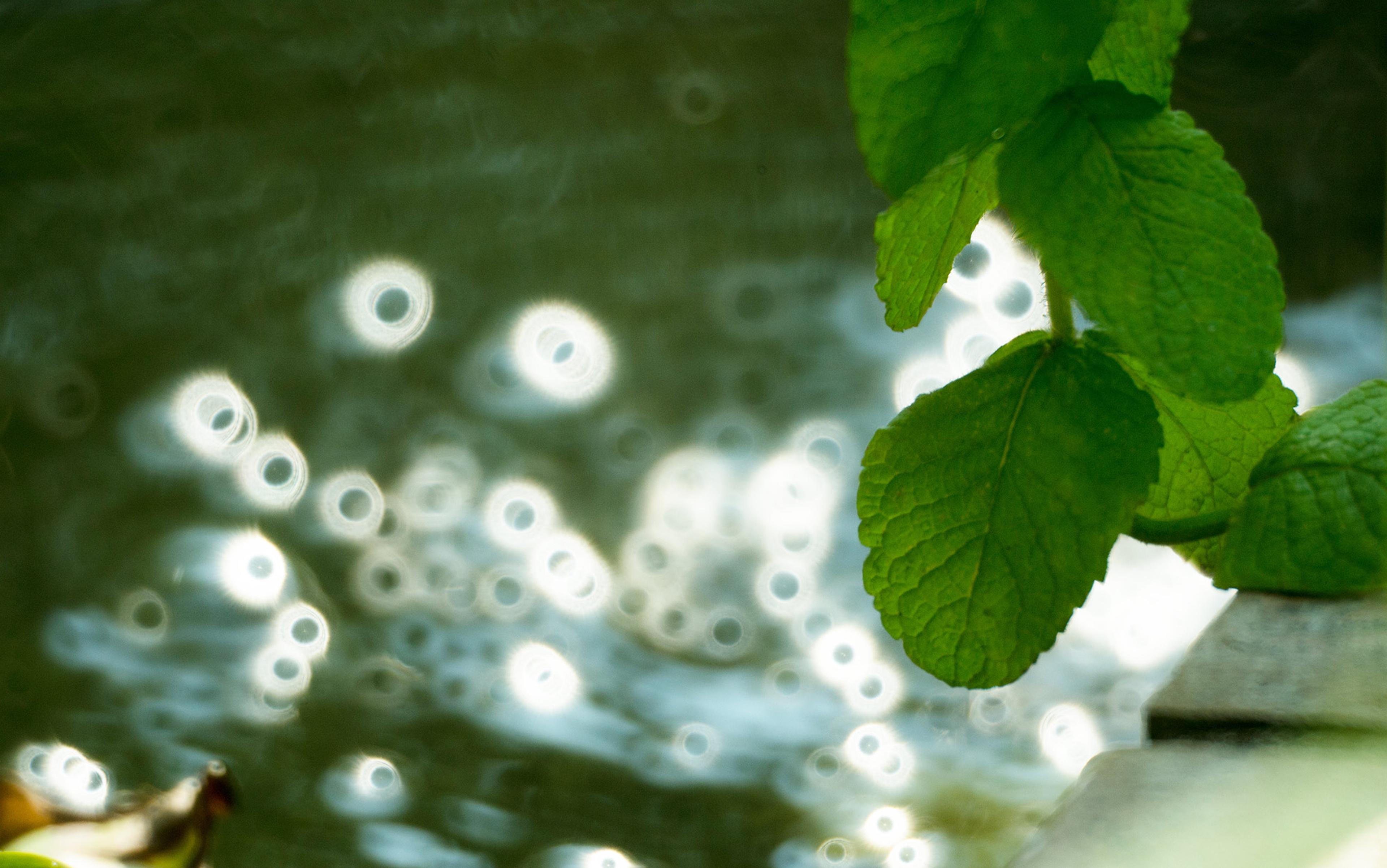Light was among the first preoccupations of modern physics. For Isaac Newton, it came between his early innovations in pure mathematics and his work on the motion of solid bodies, suggestively falling between the realm of thought and the realm of things. In its radiance and regularity, advancing in straight lines to destroy darkness and reveal the world as it really was, it was an irresistible metaphor for reason itself: hence ‘enlightenment’. Even now, our language of understanding is almost entirely composed of light imagery. An implication might be clear, a process transparent, an idea bright. Light seems inseparable from understanding.
Yet our understanding of light itself is far from complete. The last century’s debate on duality — light as both particle and wave at the same time — is by now well-covered. In the meantime, science has gone further, to the nano scale, smaller than the length of the light wave itself, to reveal its finest structure. When light is bright enough, it doesn’t just show things as they are: it changes them. And it can be remarkably knotty. That isn’t a metaphor. It literally ties itself into knots.
The brightest light in the universe is produced by powerful lasers on Earth. High-powered lasers routinely cut through the hardest materials. They might even be able to ignite nuclear fusion, providing a novel source of energy. It’s natural, then, to wonder how we might increase the brightness of our lasers. The trouble is, bright light can damage the very material generating it. It actually affects the matter through which it passes. What’s more, the interaction is what we call non-linear: it does unexpected things as the light intensity increases. In crystals, for instance, tiny filaments tend to form, a fact that has puzzled scientists since the invention of lasers in the 1960s.
Among many non-linear optical phenomena, the effects of self-action can be particularly startling. ‘Self-action’ here means that the light modifies the medium in which it is propagating, changing its own behaviour. For example, one would normally focus a ray of light using a glass lens. Bright laser beams, however, can cause lens-like distortions in the very medium through which they pass, focusing themselves into a point-size filament of extremely high intensity. The stronger they become, the more they focus; the more they focus, the stronger they become. Finally, the beam collapses into a very narrow filament that can damage the experimental apparatus.
Phase singularities are often called optical vortices: they look like whirlpools or tornadoes made of light
That doesn’t seem very useful. But this might be: light has a natural tendency to diffract — that is, to spread out in space and time. The ability to confine it is the cornerstone of contemporary photonics, a field of research that aims to replace energy-hungry electronic computer chips with much faster, greener, all-optical alternatives. Usually, that means crystals and optical fibres. Another option, however, is to make the light trap itself. Refracted through the right kind of material, you can get a light-beam to channel itself without diffraction, just like in optical fibres. What’s more, self-trapped light can be remarkably robust. You can bend it at will, working around imperfections in the medium.
When self-focusing beams collapse, this is an example of an optical singularity: the light intensity diverges to infinity and becomes singular. You can see another example of a singularity when you find a dark spot in a bright beam. If the light intensity is exactly zero at the dark spot, then the light’s ‘phase’ is undetermined, or singular. Let me explain.
Light travels as electromagnetic waves. Generally speaking, a wave is a repeating pattern. That means we can mark out fractions of each repetition — a quarter of the complete cycle, then a half, and so on. Think about how time zones on the globe mark out portions of the cycle of day and night. It’s the same idea: as time zones are to the hours of the day, so is phase to light.
Now, a question: what time is it at the North Pole, where all time zones converge? The answer, of course, is nothing — it doesn’t have one. You might say that the North Pole is a chronometrical singularity. If, on the other hand, you walk around it, you’ll cross all the time zones very rapidly. They become infinitesimally narrow as they crowd in to meet that timeless point, and so you can travel right around the clock in as short a time as you like. The same is true for optical phases, with this difference: the circulation of phase indicates a circulation of energy around the dark spot. That’s why phase singularities are often called optical vortices: they look like whirlpools or tornadoes made of light. They are, in effect, dark tunnels with walls made of light. Indeed, a small particle can be completely trapped inside such a tunnel.
At this point, things become quite counter-intuitive. Optical vortices arise in many natural phenomena as dark points of total destructive interference. In three spatial dimensions they form continuous lines, or threads of darkness about which light swirls. Yet these threads needn’t be straight lines. On the contrary, they can form closed loops, and these loops of darkness can be linked and knotted. That startling possibility was predicted theoretically more than a decade ago, by Sir Michael Berry and Mark Dennis, theoretical physicists at the University of Bristol. Now, knotted light has been observed in experiments, carried out at the University of Glasgow by a team led by Professor Miles Padgett.
What is a knot? We tend to learn about them by tying our shoelaces, or perhaps by untangling headphone wires. Yet these everyday kinds of knots are governed by mathematical rules of enormous generality and power. To learn how to tie light, or rather darkness, into a knot, scientists had to invent a way to imprint the fine structure of light with a certain kind of formula: a ‘knot polynomial’, which specified the kind of knot they wanted.
Everyone knows about the tendency of ropes and wires to get tangled up when left to their own devices. The longer the strands, the more likely they are to end up in knots. Indeed, the 2008 the IgNobel prize in physics — celebrating ‘achievements that first make people laugh, and then make them think’ — went to a study demonstrating precisely this point. But can light knot itself just as wires do? Imprinting lasers with a knot polynomial was a very delicate and precise operation. Might it have happened by itself, without human guidance?
To find out, there’s nothing for it but to search through random patterns of light until you find a knot. If you reflect a laser pointer off a rough surface (a tea cup, say), you create what’s known as a speckle field. The reflected waves interfere and multiple vortex lines appear, crossing one another in space. The probability of finding a knotted vortex, however, turns out to be vanishingly small.
It is impossible to predict exactly where a knot will be born. Chance governs their formation, just as it does the knots in a string of Christmas lights
And that is where the self-trapping of light can have a profound effect. Imagine a ray of light, a bright, narrow laser beam, piercing a non-linear medium, such as photorefractive or liquid crystal. We call the beam a stable optical solitary wave (‘soliton’, for short) if it forms an infinite perfect string of light that can survive strong perturbations. When such a beam is perturbed, however, it starts to vibrate: it seems to ‘breathe’, getting broader, then narrower, then broader again in periodic pulsations along its length. The self-trapped beam slowly radiates away its excess energy by, so to speak, breathing out low intensity waves that escape from the trap. Surprisingly, the interference between these secondary waves and the soliton itself causes optical vortices to form. These vortex lines curve to form rings in space around the laser beam: they embrace the pulsating beam like belts around its multiple waists.
To tie a ring into a knot, you have to twist it in space. It is actually fairly straightforward to twist an elliptic laser beam around its axis using cylindrical lenses. Twisting a ‘breathing’, self-trapped beam forces the vortex rings to twist and cross. Unlike wires or shoelaces, the vortex lines reconnect when they pass through each other, reliably forming complex links and knots. Yet the reconnection is extremely sensitive to small perturbations in the beam or the medium. This means that it is impossible to predict exactly where a knot will be born. Chance governs their formation, just as it does the tangles in a string of Christmas lights.
It’s a strange union, this marriage of light and knots. If the former is the symbol par excellence for understanding, the latter is a well-known figure for confusion. We get tangled up, in a bind, when we encounter a knotty problem. Still, although a less enduring preoccupation than light, knots have their own long pedigree in physics. In the 1860s, Lord Kelvin proposed that atoms themselves might be vortex knots in the aether, an omnipresent substance that was believed to permeate the universe. Different types of knots might then explain how generic ‘matter’ could be organised into so many different types of atom, a feature of reality that was otherwise a complete mystery at the time. Kelvin’s idea, though mistaken, led to the mathematical study of knots, and led us to tie those threads of darkness.
As common and useful as knots are in our everyday life, we still experience an ancient fascination and sense of symbolism when we encounter them, whether as knotted Celtic ornaments or linked Olympic rings. Is there some hidden meaning still to be discovered? From mathematical abstraction to knotted DNA molecules and knot-like elementary particles, modern science certainly treats them seriously. And even in the realms of light, one of the most studied of physical phenomena, it’s remarkable what beautiful surprises can be found along the knotted path of scientific exploration.






